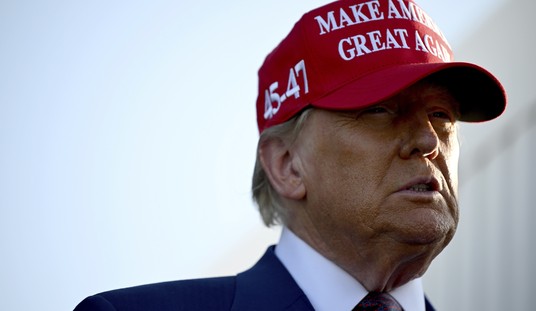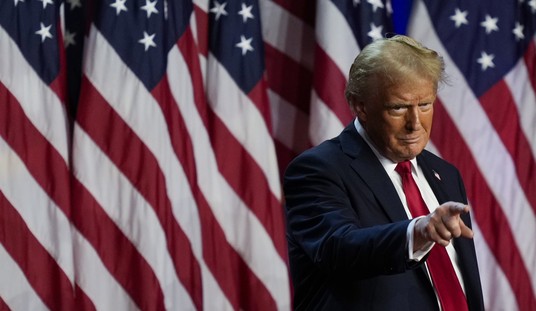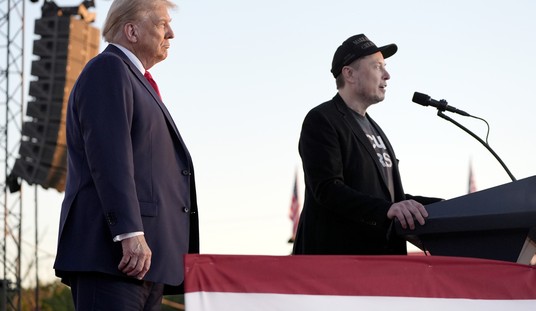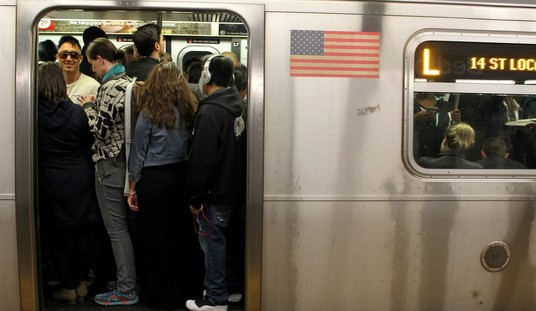Last night in the Democrat debate, Vermont Socialist (who is unsurprisingly running as a Democrat for president) had this to say about his lack of military service during the Vietnam War:
COOPER: [mc_name name=’Sen. Bernard Sanders (I-VT)’ chamber=’senate’ mcid=’S000033′ ], tell an American soldier who is watching right now tonight in Afghanistan why you can be commander-in- chief given that you applied for conscientious objector status.
SANDERS: Well, first of all, let me applaud my good friend Jim Webb for his service to this country in so many ways.
(APPLAUSE)
SANDERS: Jim and I, under Jim’s leadership, as he indicated, passed the most significant veterans education bill in recent history. We followed suit with a few years later passing, under my leadership, the most significant veterans’ health care legislation in the modern history of this country.
(APPLAUSE)
SANDERS: When I was a young man — I’m not a young man today. When I was a young man, I strongly opposed the war in Vietnam. Not the brave men like Jim who fought in that war, but the policy which got us involved in that war. That was my view then.
The left tends to make hay by calling Republicans draft dodgers. They called Mitt Romney a draft dodger. They still call Dick Cheney a draft dodger. They called George Bush, a fighter pilot, a draft dodger. Even now they are calling Donald Trump a draft dodger though the reflexively left wing PolitiFact has demonstrated this charge to be untrue.
The draft, prior to the institution of the draft lottery in 1969, was as corrupt and arbitrary a system as could be invented.
Before the lottery was implemented in the latter part of the Vietnam conflict, there was no system in place to determine order of call besides the fact that men between the ages of 18 and 26 were vulnerable to being drafted. Local boards called men classified 1-A, 18-1/2 through 25 years old, oldest first. This lack of a system resulted in uncertainty for the potential draftees during the entire time they were within the draft-eligible age group. All throughout a young man’s early 20’s he did not know if he would be drafted.
At the same time, you could, if you had the ambition, avail yourself of any number of deferments and wait out the clock.
| I-A | Available for combat service |
| I-A-O | Available for noncombatant service |
| I-C | Members of the active armed forces, or commissioned officers in Environmental Science Service Administration or Public Health Service |
| I-D | Member of reserve unit of the armed forces, or student taking military training |
| I-O | Available for civilian work assignment [ordered into or assigned into the conscientious objector work program by their local draft boards, to perform civilian work 24 consecutive months] |
| I-S | Deferment for students [for high school students under age 20, undergraduate college students who had received an order to report for induction, or a “very few” graduate students] |
| I-W | “At Work” conscientious objectors [once I-O registrants were assigned to civilian work, they were then reclassified I-W by their local draft boards] |
| I-Y | Unqualified for duty except in time of declared war or national emergency |
| II-A | Occupational deferment because of essential employment, or deferred to full-time study in a trade school, community or junior college, or approved apprenticeship program |
| II-C | Agricultural deferment |
| II-D | Deferment for members of military reserve units, or students taking advanced ROTC |
| II-S | Deferment for college students [for those who had not yet reached their 24th birthday; also for graduate students of medicine, dentistry, veterinary medicine, osteopathy & optometry, & graduate students in their fifth year of continuous study toward a doctoral degree] |
| III-A | Dependency deferment [deferred because of having a child or children with whom he maintains a bona fide family relationship; deferred because of extreme hardship to dependents] |
| IV-A | Exemption for veterans & sole surviving sons [for those whose military duty obligation was completed, or for only surviving sons of a family in which the father, or one or more sons or daughters, were killed or died in the line of duty while in the Armed Forces, or subsequently died as a result of such service] |
| IV-B | Certain officials / elected officials deferred by law |
| IV-C | Exemption for certain aliens [aliens not on permanent resident status who have not remained in the United States for more than one year; resident aliens who leave the USA; resident aliens granted relief from liability for military service] |
| IV-D | Exemption for ministers & divinity students |
| IV-F | Unfit for military service |
| V-A | Over-age [26 years old if never deferred; 35 years old for those who held a deferment / with “extended liability”] |
Higher income kids gravitated to college… I believe the reason academia became so left wing in the 1970s was because the system was glutted with rich kids who picked up a PhD (I-S) while avoiding military service. Draft evaders also peppered the ranks of ROTC detachments and National Guard and Reserve units (II-D). Working class kids could get married (III-A), work on a farm (II-C), or join a union and go through an apprenticeship program (II-A). Mormon kids, like Mitt Romney, could pick up a IV-D for their mission work. Anyone could look hard enough and find a doctor who would find some medical reason (asthma and hayfever were really popular) to make you IV-F, which was the gold standard of deferments.
In other words, the line between avoidance (legal) and evasion (illegal) was a pretty bright line and much more than a semantic difference.
This brings us back to Bernie Sanders. Sanders says he was opposed to the Vietnam War and applied for conscientious objector status. This was not all that easy to get. It wasn’t enough to be opposed to the war in Vietnam, you had to be opposed to all war. Bernie Sanders became eligible for the draft in September 1959 but he was enrolled in college and carried a nearly automatic I-S deferment until his graduation in 1964. He now had three years of draft vulnerability. He married after college and could have sustained a III-A. Draft boards were not big on drafting married men. He divorced in 1966 and suddenly came to the top of the list. He had no deferment and he was 25 years old. He almost without doubt received a draft notice. But all he had to do was run out the clock until September 9, 1967 and he would be over 26 and home free.
The unpopularity of the Vietnam War increased both the number and the visibility of conscientious objectors. Between 1965 and 1970 more than 170,000 registrants applied for conscientious objector status. The Seeger ruling did not have a wide impact on conscientious objection because local draft boards were free to interpret the ruling as they saw fit. The most celebrated case was that of boxer Muhammad Ali, who in 1966 claimed that military service was inconsistent with his conversion to Islam. Ali should have been covered under Seeger, but his local draft board found his beliefs to be insincere and sentenced him to five years in prison. He remained free on bond until his case was overturned in 1971, but hundreds of Muslims (especially black Muslims) went to jail because courts refused to accept their religion as the basis for conscientious objection.
Men seeking conscientious objection status during the Vietnam era were helped by lawyers who specialized in getting the exemptions. Many men saw conscientious objection in the Vietnam period less as a principled stand on religious grounds than as a legal way out of service. Good draft lawyers were well within the financial reach of most men from middle-class families, and they could at least tie up the conscription system with paperwork for months or even years. Most were successful in gaining conscientious objector status for their clients, who were normally ordered to perform an alternative service of two years of low-paying work in the public sector in a location beyond commuting distance from home. In reality, draft boards were so overwhelmed by their responsibilities that supervision of conscientious objectors was minimal.
This is what Sanders did. He filed a petition to be classified I-O, conscientious objector. By the time he was interviewed and the final disapproval issued by his draft board, he was out of danger. This is how the draft is dodged. Sanders applied for a totally specious deferment — one that was facially invalid under the rules of the time — knowing that by the time his local draft board got around to saying no that he could not be drafted. As a result, Sanders, unlike people who followed the law, is the guy who actually sent some kid off to Vietnam in his place.














Join the conversation as a VIP Member